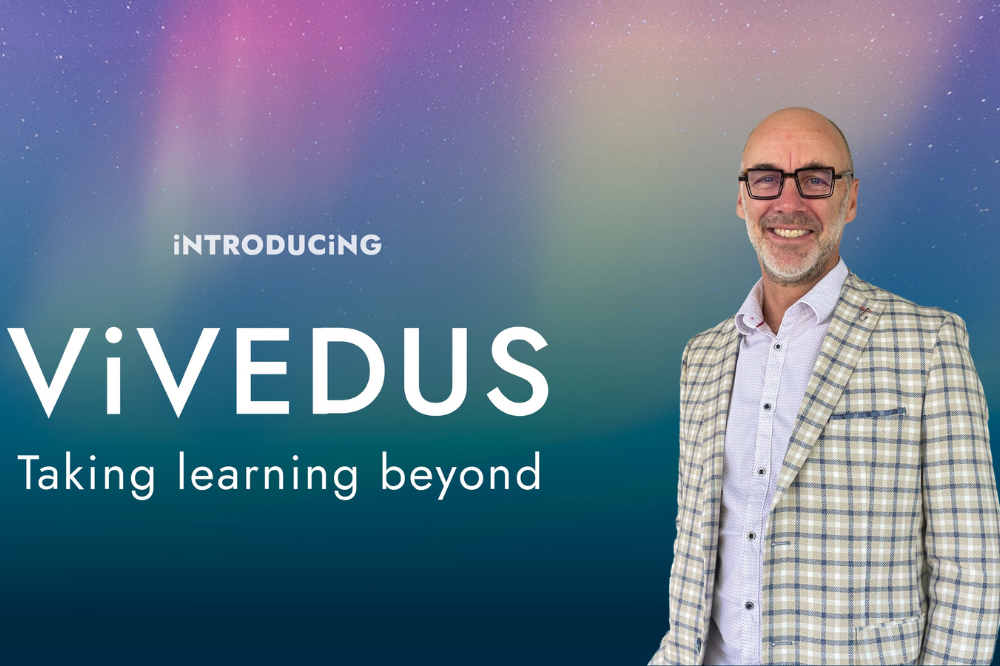
Globally renowned British author and orator, Sir Ken Robinson once asked, ‘are schools killing creativity?’ The video, which has received more than 76 million views since first being published in 2006, has been the subject of ongoing debate, but one former principal – aware of the rapid transformations that have taken place in technology and the workplace – has long been convinced the answer to Sir Ken’s question is a resounding ‘Yes’.
Technological advances driven by Moore’s Law mean that we are living in an “Age of accelerations” Not only is the world changing – it’s changing at a dizzying pace.
With automation and AI, jobs we know of today are being massively transformed if they continue to exist at all. The new jobs that are emerging need high levels of emotional intelligence and the ability to think creatively; the things AI cannot replicate and never will.
It’s fair to say Dr Browning has had his finger on the pulse when it comes to the implications of this.
He has periodically consulted dozens of global experts across disciplines such as astrophysics, economics, theology and philosophy under St Paul’s School’s ‘The World in 2028’ project, several times hosted the ‘World School’ program and, more recently, rubbed shoulders with some of the greatest minds in the field of Artificial Intelligence to discuss the impact this technology will have on teaching and learning, both now, and well into the future.
Off the back of these forward-thinking initiatives, Dr Browning and a team of educators with a combined 120+ years of experience are now going one step further, launching ‘Vivedus’ – an edtech company which aims to “transform education globally” by providing “a whole-school solution for the AI era”.
A crucial element in the company’s evolution has been a research partnership with the Graduate School of Education at The University of Melbourne, which ensures the Vivedus model is not in conflict with pedagogies such as direct instruction or Universal Design for Learning and builds on those approaches to “take the learning beyond”.
Below, The Educator speaks to Vivedus’ managing director, Dr Browning and Head of Research and Development, Gabrielle Kempton, about the most unique aspects of the model, how teachers can integrate it into their lessons, and its implications for learning in the future.
TE: Vivedus is described as a model to “take learning beyond”. In your view, what is the most significant way it deviates from the current model of education being used by schools around the world?
Vivedus brings together content delivery and building creative capacity among learners and teachers. It is as much about the teachers having those creative dispositions as it is the students. Vivedus expands on current practices that are quite linear in their delivery. It enables teachers and learners to go beyond the constraints of mandated requirements for content knowledge and opens up possibilities for students to know, do, understand and generate knowledge themselves. In generating knowledge, learners see the value of knowing what they have learned, and how it can be applied to contexts that have deep meaning for them. This is where entrepreneurialism and innovation flourish.
TE: I understand that Vivedus has been designed to fit with many different teaching styles that are already being used in classrooms. Can you walk us through how teachers can blend this into their current lessons?
Teachers are able to embed Vivedus into any classroom through the alignment of curriculum, learning design and learning activity to Vivedus methodology. The Vivedus Model helps to develop a common language among teachers regarding how they plan, teach and learn. That language is based on the fundamentals of good teaching practice and so the transition to the Vivedus way is natural, as it taps into what is already being done. It brings into focus particular pedagogies and approaches to teaching that allow teachers to foster creativity inside of their subject areas and they are able to build agency within their practice. Interdisciplinary and vertical learning, STEM and STEAM become entirely possible with that agency.
TE: As Vivedus is implemented and evolves, what are the most powerful changes you hope to see in how students engage with their learning?
Engagement is the key. Learners become active participants in their learning when Vivedus is consistently embedded in every classroom across a school by teachers who are growing their own practice and creative capacity. The Vivedus Model provides possibilities for learners to become co-curators in the learning. You can expect to see learners actively involved in decision making and problem solving, deep enquiry and collaboration. They are able to express how they are good at x,y,z because their agency is fostered over time.
TE: Looking ahead, how do you envisage Vivedus will help schools keep abreast of the rapidly evolving technology landscape while also helping principals and teachers keep human-centered education at the forefront of teaching and learning?
The real question is, “what is the purpose of education”? The answer should be, “to equip young people with the skills, dispositions and character traits to thrive.”
With the dawn of the AI era life as we know it, including schools and teaching will change significantly (Professor of AI, Nigel Crook). We will not be able to resist the change coming. In the words of Andreas Schleider, Director of Educator OECD, who lent his support for Vivedus in a provocation video (see www.vivedus.com),“Education [can] no longer be about teaching students something, but about helping them build a reliable compass and the tools to navigate this world with confidence”. Vivedus is about providing that reliable compass and the tools to navigate the world with confidence, future-proofing education and enabling young people to thrive in the AI era.


